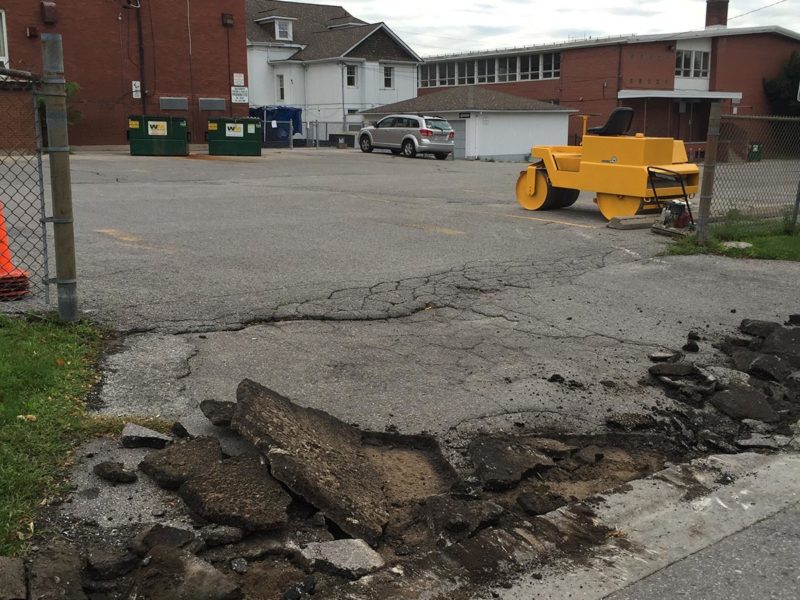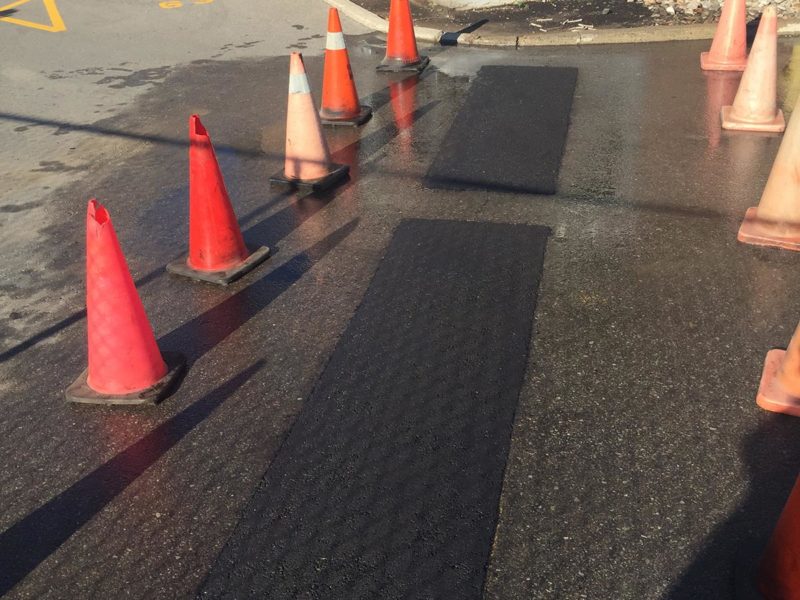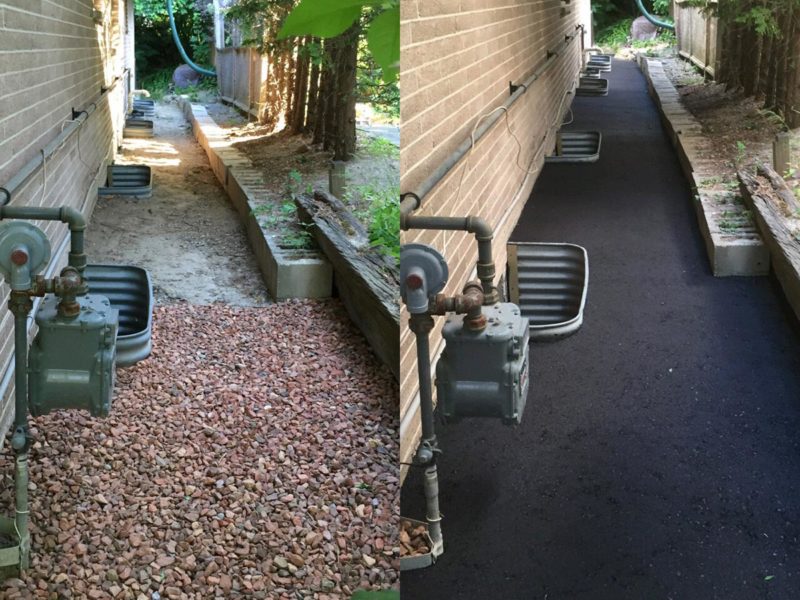Hot Asphalt Repairs
Pavements over time will inevitably need to be repaired using hot mix asphalt. Asphalt is a mixture of aggregates and binders, giving it the ability to distribute traffic loads and handle the applied pressure from vehicle wheels. Over time, damage may have occurred by several factors such as, cracks left unattended for long periods of time, insufficient depth of gravel base/ asphalt thickness, or a combination of overall poor construction quality. This typically results in sinkage, large broken ‘alligatored areas’ or potholes. Other reasons for repair could be poor compaction practices resulting in sub-base settlement, tree root damage, gas and oil spills, and dry-steering tire marks.
Some repairs may only require a thin asphalt overlay, while others require to be saw cut, removed, and replaced. In certain applications and situations, we use infrared technology to perform the repair.
Overlay Repair Method
Typically overlays are used residentially, in the case of low depressions, garage floor ramps and ruts. There are also a few commercial applications such as wheel chair ramps, and wear course patch replacement, where we would use this method.
After thoroughly cleaning the area, an application of tack coat (SS1 adhesive) is always used to ensure proper bonding. Followed by the installation of hot asphalt, it is formed and compacted using a hand tamper, vibratory plate tamper or asphalt roller.
Saw Cut and Removal Method
In the event of more serious problems such as “alligator” cracking, saw cut and removal of the damaged asphalt area, is inevitable. Our process consists of several important steps to assure that the repair is performed correctly.
First we start by neatly saw cutting the perimeter of your deteriorated asphalt at the specified dimensions. We then remove the deteriorated asphalt and assess the existing gravel base for structural stability. Any unsuitable sub base material will be excavated. The material is then hauled off site and recycled or properly disposed of. Gravel is then supplied, installed and compacted in several layers using a plate compactor or jumping jack, to reduce future settlement. If there already is an existing structurally sound gravel base, we will then re compact it to insure a solid foundation for the rest of the repair process. A tack coat adhesive called SS1 is then applied to the sides of the saw cut edges, followed by the asphalt placement and compaction process. This is done by installing 2″- 4″ of hot mix asphalt in one or two layers depending upon job application. We finish it off by following rigid compaction guidelines. This is to control compacted air voids so that air and moisture will not permeate the pavement, which can leave it porous and reduce its durability. A heavy asphalt roller is used during the compaction process, with the addition of a vibratory plate tamper to pinch the edges.
The cost for such work depends upon your location, the amount of grading or substrate work required, and other site specific factors. To avoid the expenses involved with asphalt removal and replacement, it is generally prudent to maintain a pavement maintenance plan that includes timely crack sealing, sealcoating and pot hole patching. Call Pavestar today for a pavement assessment and a free quote!
Infrared Repair Method
Another form of pavement repair that we offer uses Infrared technology. Infrared rays cannot be seen, but our equipment allows these rays to safely penetrate deep inside the asphalt. This process allows us to recycle the existing asphalt without burning it like an open flame would.
Some applications for infrared use are utility trenches, ramps, catch basin depressions, potholes and low areas (bird baths).
Our process begins by identifying the affected area and marking it out. Preparing it for the infrared process is an important step, and must be followed to allow for a successful and efficient repair. The areas must be swept and blown clean to remove any dirt and loose particles as well as any standing water, as this does not allow the infrared rays to penetrate evenly.
The infrared heater is placed into position and then ignited. The surface is heated to 325 degrees for approximately 7 to 15 mins (depending upon season, depth and mix design). The heated area is then scarified and any excess aggregate or coarse material raked off. A rejuvenating agent is applied to replenish the light oils and maltines that have been lost over the years. We then add fresh hot mix asphalt, and rake it in with the existing material and establish final grade. Lastly, the area is ready for compaction using a vibratory roller, always starting with pinching the outside edges first, and working our way to the center.
The result is a durable and seamless repair, and because we reuse your existing asphalt it’s environmentally friendly!




